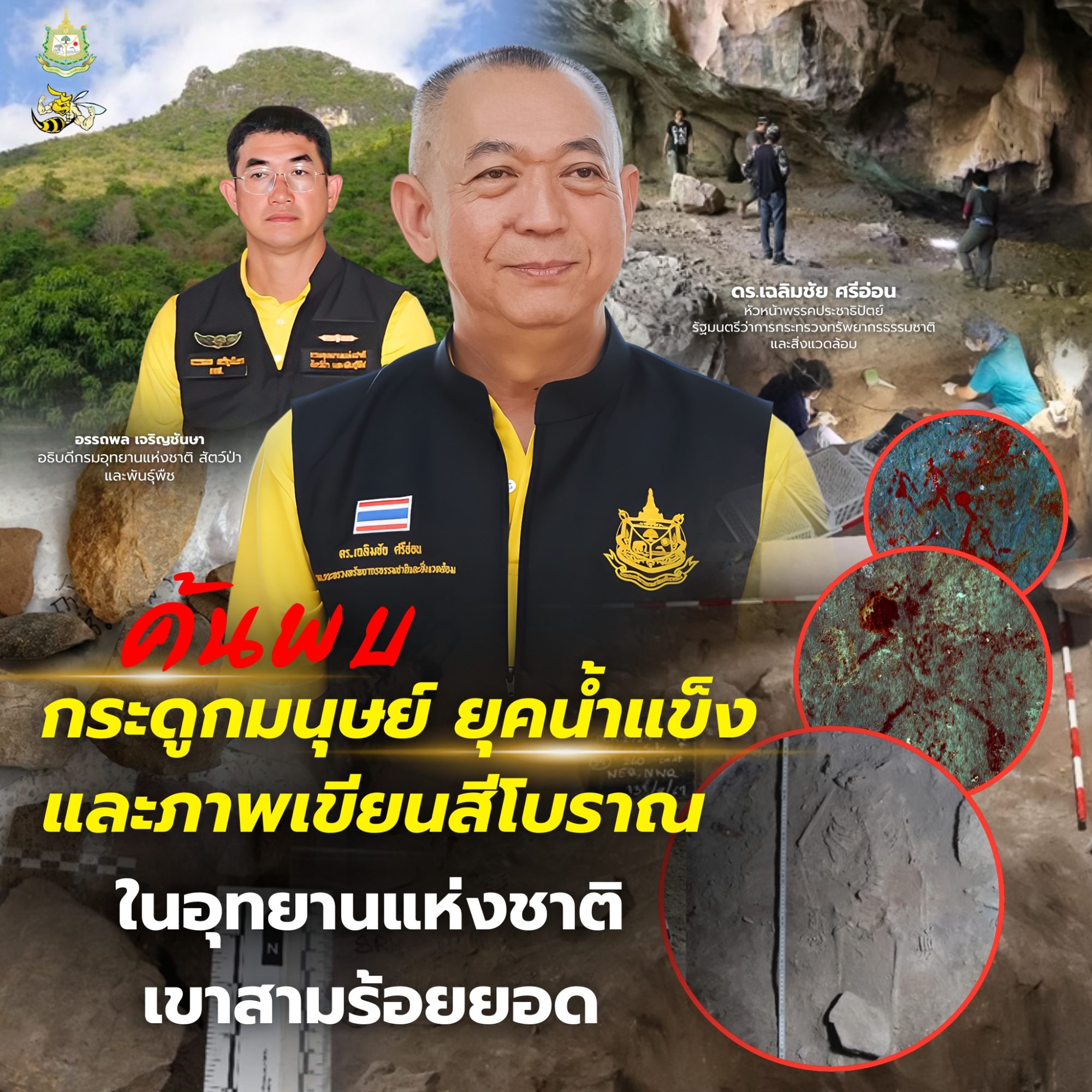A child’s skeleton dating back more than 29,000 years has been discovered in Khao Sam Roi Yot National Park, Prachuap Khiri Khan, marking a significant archaeological find that sheds light on prehistoric human habitation in western Thailand.
Chalermchai Sri-on, Minister of Natural Resources and Environment, announced the discovery on his Facebook page over the weekend. He highlighted its importance in contributing to the historical and cultural significance of the national park and extended his appreciation to archaeologists, park officials, and all involved in the research.
The excavation and study are being carried out by the Archaeology Group of the Fine Arts Department’s 1st Regional Office in Ratchaburi. The project focuses on Tham Din, or Earth Cave, an archaeological site within the national park where evidence of human habitation from the Paleolithic to Mesolithic periods has been found. Scientific dating methods, including Accelerator Mass Spectrometry (AMS), suggest the site was occupied between 29,000 and 10,000 years ago.
The study aims to trace early human habitation in the region and establish an academic database to support future cultural heritage tourism development in Khao Sam Roi Yot National Park. Excavations in the 2022–2023 fiscal years uncovered animal bones, shells, plant seeds, and stone tools within the cave’s five chambers.
In the 2024 fiscal year, archaeologists made a key discovery at a depth of 190–195 centimetres from the cave’s current floor—evidence of a burial site containing a single skeleton. Preliminary analysis indicates the remains belonged to a child, estimated to have been around six or seven years old at the time of death.
Despite the discovery, researchers have yet to establish a direct connection between the prehistoric groups that inhabited Tham Din Cave around 20,000 years ago and the rock paintings found inside the cave and on the cliffs of Khao Sam Roi Yot’s mountains. The Archaeology Group of the 1st Regional Office in Ratchaburi is currently exploring methods to date the rock paintings more precisely.
A press conference on the discovery is scheduled for 24 February 2025 at the Khao Daeng Visitor Centre in Khao Sam Roi Yot National Park. The Director-General of the Fine Arts Department will provide further details on the findings and their significance in understanding Thailand’s prehistoric past.

